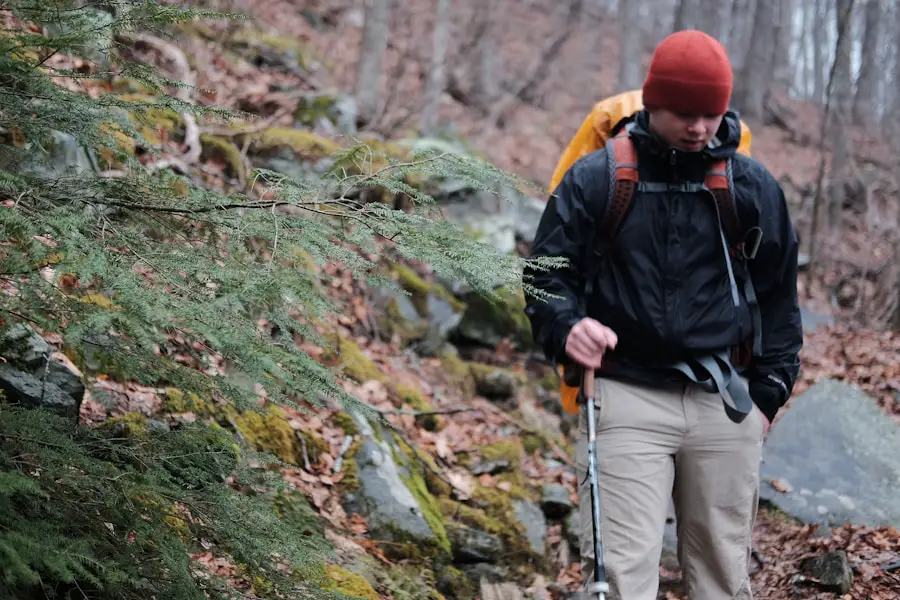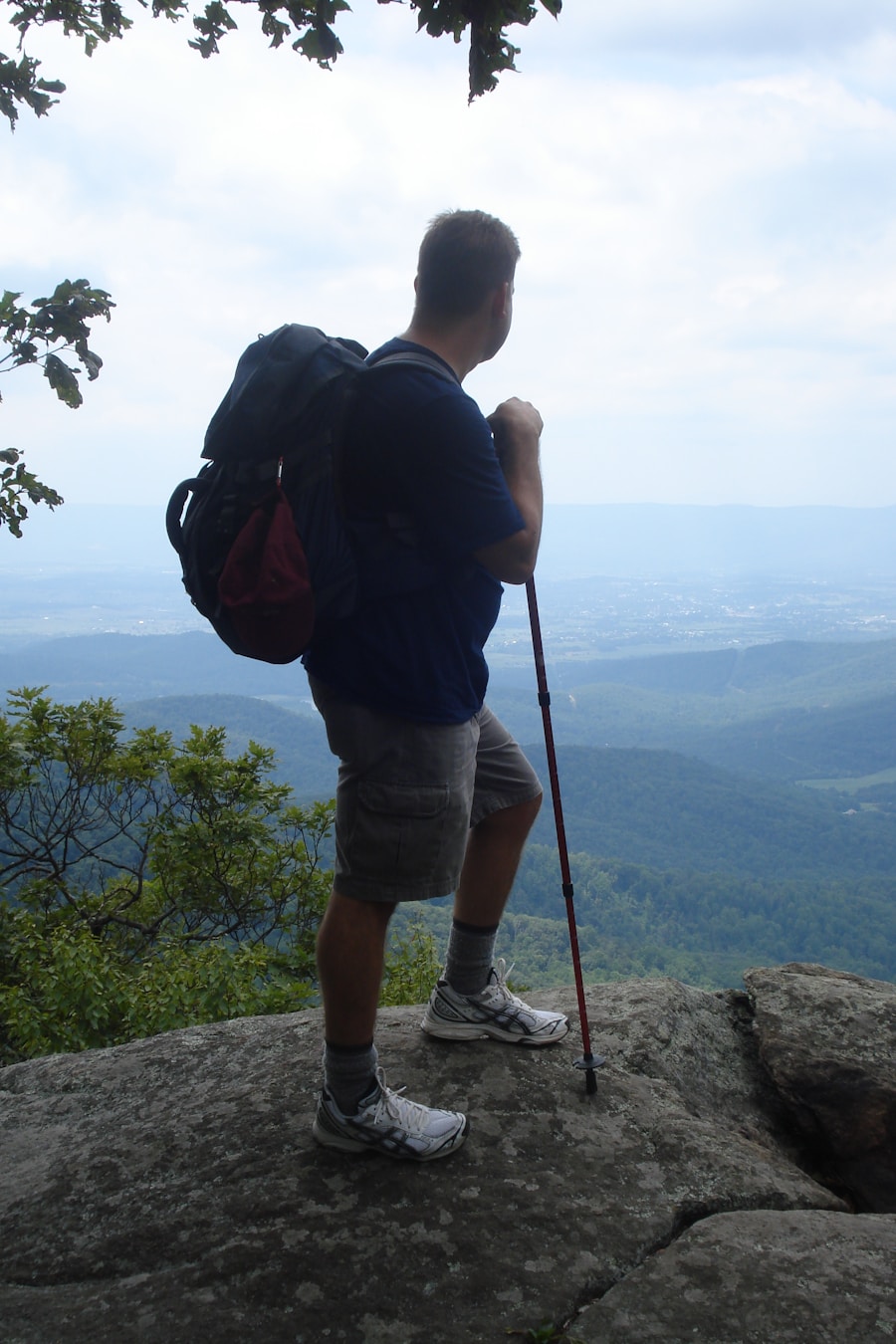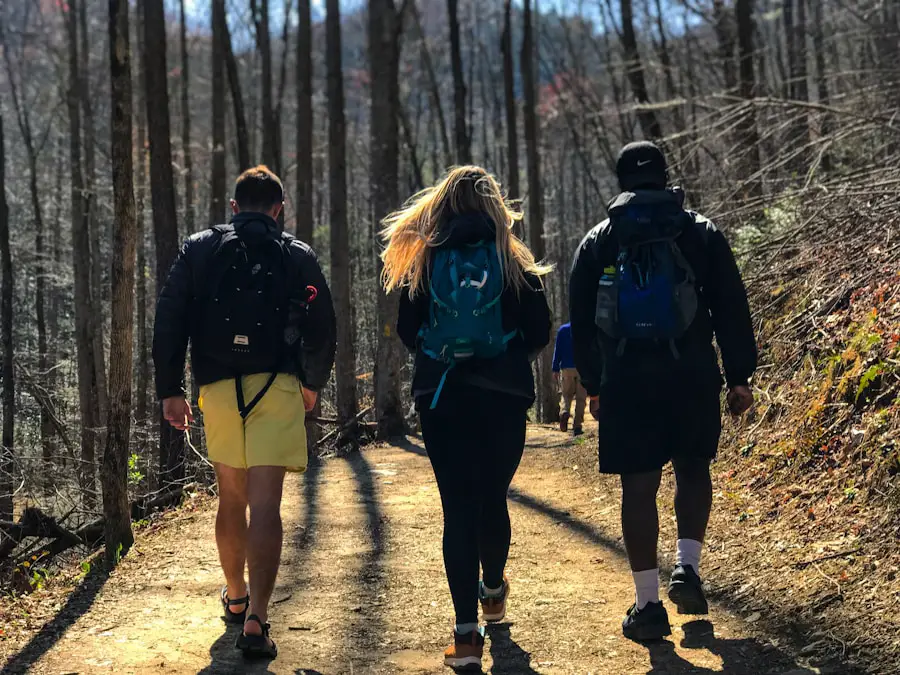NOBO hiking, short for “Northbound hiking,” refers to the practice of hiking a trail from its southern terminus to its northern terminus. This term is most commonly associated with long-distance trails, such as the Appalachian Trail (AT) and the Pacific Crest Trail (PCT), where hikers embark on a journey that spans hundreds or even thousands of miles. The NOBO approach is particularly popular among those who seek to experience the gradual changes in terrain, climate, and flora and fauna as they progress northward.
The allure of NOBO hiking lies not only in the physical challenge but also in the opportunity for personal growth and self-discovery. As hikers traverse diverse landscapes, they often encounter a variety of ecosystems, from lush forests to arid deserts, each presenting unique challenges and rewards. The journey becomes a transformative experience, allowing individuals to connect deeply with nature while pushing their physical and mental limits.
The camaraderie among fellow NOBO hikers also fosters a sense of community, as many share similar goals and aspirations along the trail.
Key Takeaways
- NOBO hiking stands for “Northbound” hiking, which involves hiking from the southern end of a trail to the northern end.
- When planning a NOBO hiking adventure, consider factors such as trail difficulty, weather conditions, and resupply points.
- Essential gear for NOBO hiking includes a reliable backpack, sturdy hiking boots, a lightweight tent, and a water filtration system.
- To have a successful NOBO hiking trip, it’s important to pace yourself, stay hydrated, and be prepared for unexpected challenges.
- Safety considerations for NOBO hiking include carrying a first aid kit, informing others of your itinerary, and being aware of wildlife and potential hazards on the trail.
Planning Your NOBO Hiking Adventure
Choosing the Right Trail
Planning a NOBO hiking adventure requires careful consideration of various factors, including the trail’s length, terrain, weather conditions, and personal fitness levels. One of the first steps in this planning process is selecting the right trail. For instance, the Appalachian Trail stretches approximately 2,200 miles from Georgia to Maine, while the Pacific Crest Trail covers about 2,650 miles from Mexico to Canada. Each trail offers distinct experiences, so it’s essential to research and choose one that aligns with your interests and capabilities.
Creating a Detailed Itinerary
Once you have selected a trail, creating a detailed itinerary is crucial. This includes determining daily mileage goals based on your fitness level and the trail’s difficulty. Many experienced NOBO hikers recommend starting with shorter daily distances and gradually increasing them as your body adapts to the rigors of long-distance hiking.
Planning for Resupply Points
Additionally, it’s important to account for resupply points along the way, where you can replenish food and gear. Familiarizing yourself with towns or locations near the trail can help you plan for these essential stops effectively.
Essential Gear for NOBO Hiking

The right gear can make or break a NOBO hiking experience. A well-thought-out packing list should prioritize lightweight and multifunctional items to minimize the burden on your back while ensuring you have everything you need for safety and comfort. A high-quality backpack is essential; it should fit well and have enough capacity to carry your gear without being cumbersome.
Look for features like adjustable straps, multiple compartments, and hydration reservoirs. Clothing is another critical aspect of your gear selection. Layering is key in NOBO hiking due to varying weather conditions encountered along the trail.
Start with moisture-wicking base layers to keep sweat away from your skin, followed by insulating layers for warmth, and finish with a waterproof and breathable outer layer to protect against rain and wind. Footwear is equally important; investing in durable, comfortable hiking boots or shoes that provide good ankle support can prevent injuries and blisters during long treks.
Tips for a Successful NOBO Hiking Trip
| Tip | Description |
|---|---|
| Proper Gear | Ensure you have the right hiking boots, clothing, backpack, and other essential gear for the trip. |
| Physical Conditioning | Prepare your body for the physical demands of the hike by training and building endurance. |
| Navigation Skills | Learn how to read maps, use a compass, and understand trail markers to navigate the trail. |
| Water and Food | Carry enough water and high-energy snacks to stay hydrated and fueled during the hike. |
| Weather Awareness | Check the weather forecast and be prepared for changing weather conditions during the hike. |
| Leave No Trace | Follow the principles of Leave No Trace to minimize your impact on the environment. |
| Emergency Plan | Have a plan for emergencies, including first aid, communication, and knowing the nearest exit points. |
Embarking on a NOBO hiking trip requires not only physical preparation but also mental fortitude. One of the most effective tips for success is to maintain a steady pace that allows you to enjoy the journey rather than rushing through it. Many hikers find that adopting a rhythm—whether through consistent breathing or foot placement—can enhance their endurance over long distances.
It’s also beneficial to take regular breaks to rest, hydrate, and refuel with snacks, which can help maintain energy levels throughout the day. Another important aspect of a successful NOBO hike is staying flexible with your plans. Weather conditions can change rapidly in mountainous regions, and unexpected challenges may arise along the trail.
Being adaptable allows you to make necessary adjustments without becoming discouraged. Additionally, keeping a positive mindset can significantly impact your experience; focusing on the beauty of your surroundings and celebrating small milestones can help you stay motivated during tough stretches.
Safety Considerations for NOBO Hiking
Safety should always be a top priority when undertaking a NOBO hiking adventure. One of the first steps in ensuring safety is to familiarize yourself with the trail’s specific hazards, such as wildlife encounters, difficult terrain, or potential weather-related issues. Carrying a detailed map and compass or a GPS device can help you navigate effectively and avoid getting lost in unfamiliar areas.
First aid knowledge is also invaluable for any hiker. Understanding how to treat common injuries such as blisters, sprains, or insect bites can make a significant difference in your ability to continue your journey. Packing a well-stocked first aid kit tailored to your needs is essential; this should include items like antiseptic wipes, adhesive bandages, pain relievers, and any personal medications you may require.
Additionally, informing someone about your itinerary and expected return date can provide an extra layer of safety in case of emergencies.
Embracing the Challenges of NOBO Hiking

NOBO hiking presents numerous challenges that test both physical endurance and mental resilience. From steep ascents to unpredictable weather conditions, each obstacle encountered along the trail can be daunting. However, embracing these challenges often leads to profound personal growth.
Many hikers find that overcoming difficulties fosters a sense of accomplishment and boosts self-confidence. Moreover, challenges on the trail often create opportunities for learning and adaptation. For instance, navigating through difficult terrain may require problem-solving skills and creativity in finding alternative routes or techniques for climbing steep sections.
These experiences not only enhance hiking skills but also translate into valuable life lessons about perseverance and adaptability in everyday situations.
Connecting with Nature on a NOBO Hiking Adventure
One of the most rewarding aspects of NOBO hiking is the deep connection it fosters with nature. As hikers traverse diverse landscapes—from dense forests to open meadows—they become attuned to the rhythms of the natural world around them. The sights and sounds of wildlife, the changing colors of foliage with each season, and the serenity of remote locations all contribute to an immersive experience that rejuvenates the spirit.
This connection often leads to heightened awareness and appreciation for environmental conservation. Many hikers return from their journeys with a renewed commitment to protecting natural spaces and advocating for sustainable practices. Engaging with nature in such an intimate way encourages individuals to reflect on their relationship with the environment and inspires them to take action in preserving it for future generations.
Reflecting on the Rewards of NOBO Hiking
The rewards of completing a NOBO hiking adventure extend far beyond physical fitness; they encompass emotional and psychological benefits as well. Many hikers report feelings of accomplishment and fulfillment upon reaching their destination after months of hard work and dedication. The journey itself often becomes a source of cherished memories—moments shared with fellow hikers around campfires, breathtaking sunrises witnessed from mountain summits, or simply the quiet solitude found in nature.
Additionally, the experience can lead to lasting friendships formed along the trail. The shared challenges and triumphs create bonds that often extend beyond the hike itself, fostering a sense of community among those who have embarked on similar journeys. Reflecting on these connections can provide ongoing motivation for future adventures while reinforcing the idea that nature has an incredible power to bring people together in meaningful ways.
In summary, NOBO hiking is not just about reaching a destination; it’s about embracing every step of the journey—navigating challenges, connecting with nature, and reflecting on personal growth along the way. Each hike offers unique experiences that enrich lives and inspire individuals to continue exploring the great outdoors.
If you are considering embarking on a nobo hiking adventure, you may also be interested in reading about finding housing as a travel nurse. This article provides valuable tips and resources for nurses who are constantly on the move and need to secure temporary housing in various locations. Check out the article here to learn more about how to find suitable accommodations while pursuing your travel nursing career.
FAQs
What does “NOBO” hiking mean?
NOBO stands for “northbound” and refers to hiking or thru-hiking a trail in a northward direction, starting from the southern end and heading towards the northern end.
What are some popular NOBO hiking trails?
Some popular NOBO hiking trails include the Appalachian Trail, Pacific Crest Trail, Continental Divide Trail, and the John Muir Trail.
What are the benefits of NOBO hiking?
NOBO hiking allows hikers to experience a sense of progression as they move towards their destination, and it often provides a more gradual increase in elevation gain.
What are some challenges of NOBO hiking?
Challenges of NOBO hiking can include weather changes, trail conditions, and the need for careful planning and preparation, especially for long-distance thru-hikes.
How should hikers prepare for a NOBO hike?
Hikers should prepare for a NOBO hike by researching the trail, planning their route and resupply points, obtaining necessary permits, and ensuring they have the appropriate gear and physical conditioning for the journey.
